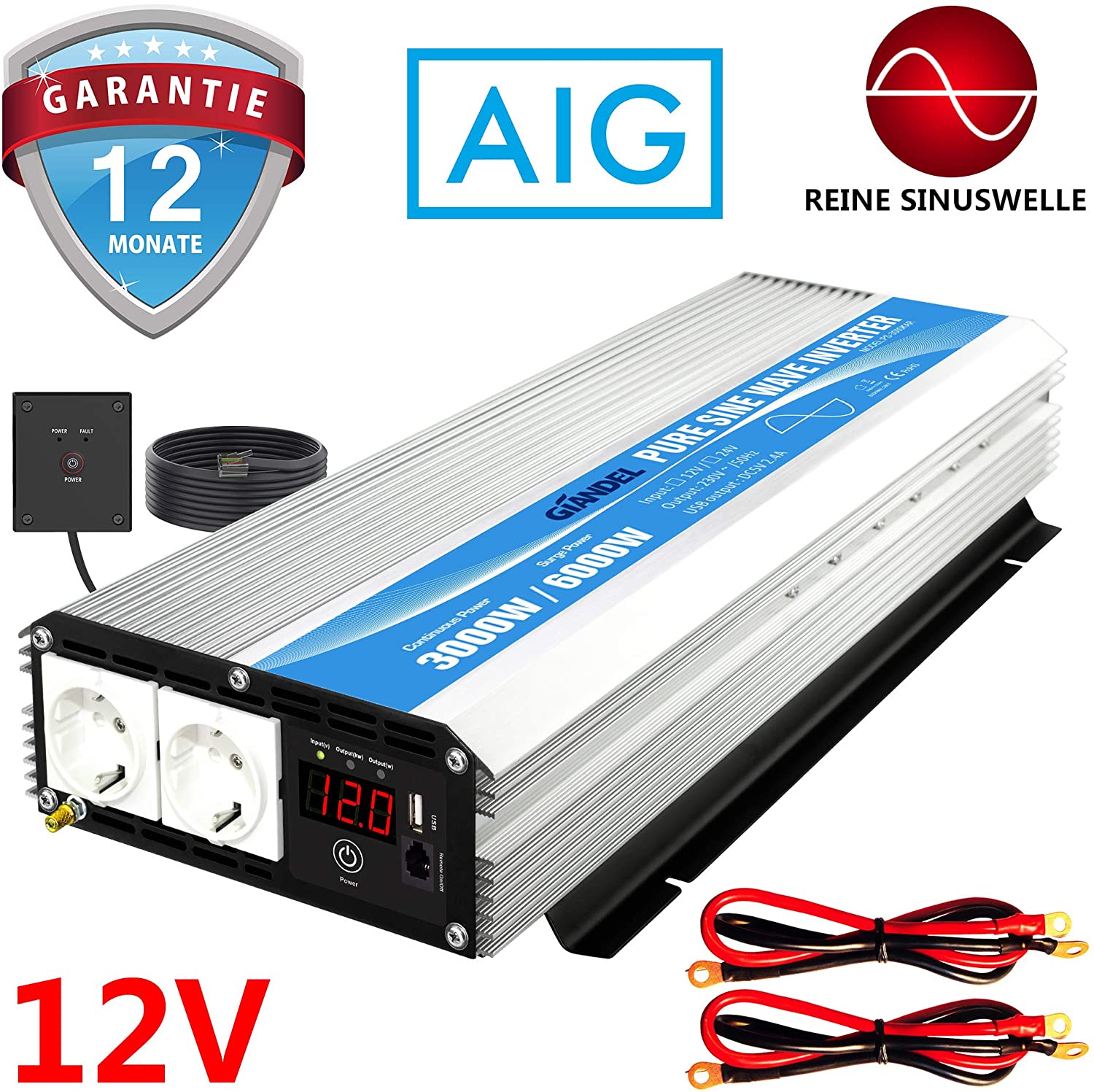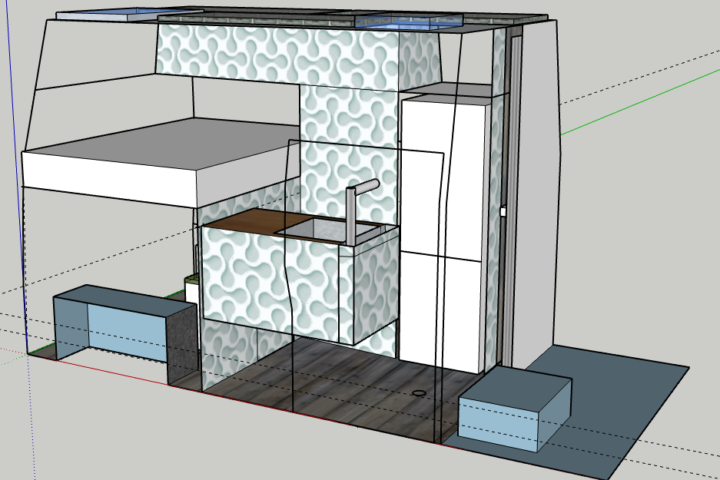First of all, you need an inverter that generates the usual 230V AC voltage from 12V DC voltage.
And already the problems begin:
There are hundreds of them on the market with extremely different prices. Now you might say: If you buy cheap, you buy twice, and that may be true, but that doesn’t mean that I’m best off with the most expensive one. So what to do?
To find the right inverter you need to know 2 things:
- How many watts do my devices have? And which devices are running at the same time?
- Which types of devices do I want to use?
The first question is important because I figure out what power the inverter must have. If I have a 2000W oven and it should always run in the morning together with the 1800 Watt coffee machine, that is 3800 Watts. sounds simple at first, if there were not the inrush currents. Inrush currents are only present for a very short time, but can be many times higher than the continuous current that flows afterwards.
(This is called the inductive loads, which includes pretty much everything with a motor/drive. E.g. drilling machines, washing machines but also compressors, etc.)
However, the manufacturer of the devices always specifies the power in relation to the continuous current and not to the inrush current. A rule of thumb says that you should always calculate with twice the current. In our example, that would be 7600 watts. Fortunately, the inverters also have a tolerance and always indicate two powers. On the one hand, of course, the continuous power but also the short-term power. This should be but is not always located at twice the continuous power. And it is usually only available for a few milliseconds, which is difficult when the connected motor needs e.g. 5 seconds to reach full speed.
The second question: device types? Now we come to the sine curve. I think that everyone has seen such a curve before and if not, it doesn’t matter because one is shown below. But what does this have to do with inverters? Well the cheap inverters have a so called modified sine wave and that means simplified that the curve is actually not a curve but more like a staircase. And exactly these modified sine curves are not tolerated by every device.
Which device needs which sine wave now?
So-called capacitive loads.
This usually includes all sensitive electronics, such as the coffee pad machine and the fully automatic coffee machine, control units, measurement technology, amplifiers, hi-fi systems, etc.
Some of it can still work but it can lead to premature defects, unpleasant side effects like humming and other side effects that you don’t want to have.
And how do I find out if my device can handle a modified sine wave? This is usually only possible by trial and error, because the manufacturers usually do not provide any information.

So if I just want to run a classic coffee maker and some chargers, then an inverter with a modified sine wave may be quite sufficient but…
my conclusion:
An inverter I will buyonly once for a very long time. For this reason, I advise the following:
- required total power plus 30 percent reserve
- real sine wave to be future-proof, because nothing would be more annoying if you buy a new device a few months later and find out that it can’t cope with a modified sine wave.
- double peak load (3000/6000W: even if this is only in the millisecond range, it usually means that instead of 3000 watts of continuous power, you can also call up 3500 watts over a few minutes).
- In the end, all of the above has an impact on the price, which in my eyes is amortized very quickly if you convert this to the years of operation.
And last but not least, here’s the model I’m planning to install:
Giandel 3000 Watt pure sine wave*
* The links are so called affiliate links. This is a fair way to support me and say thank you, because it costs you nothing except the regular price of the item and I get a commission for your purchase which helps me to realize this project and the following.




